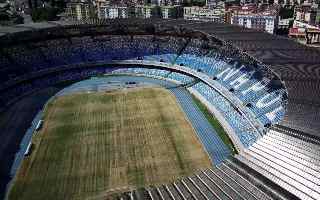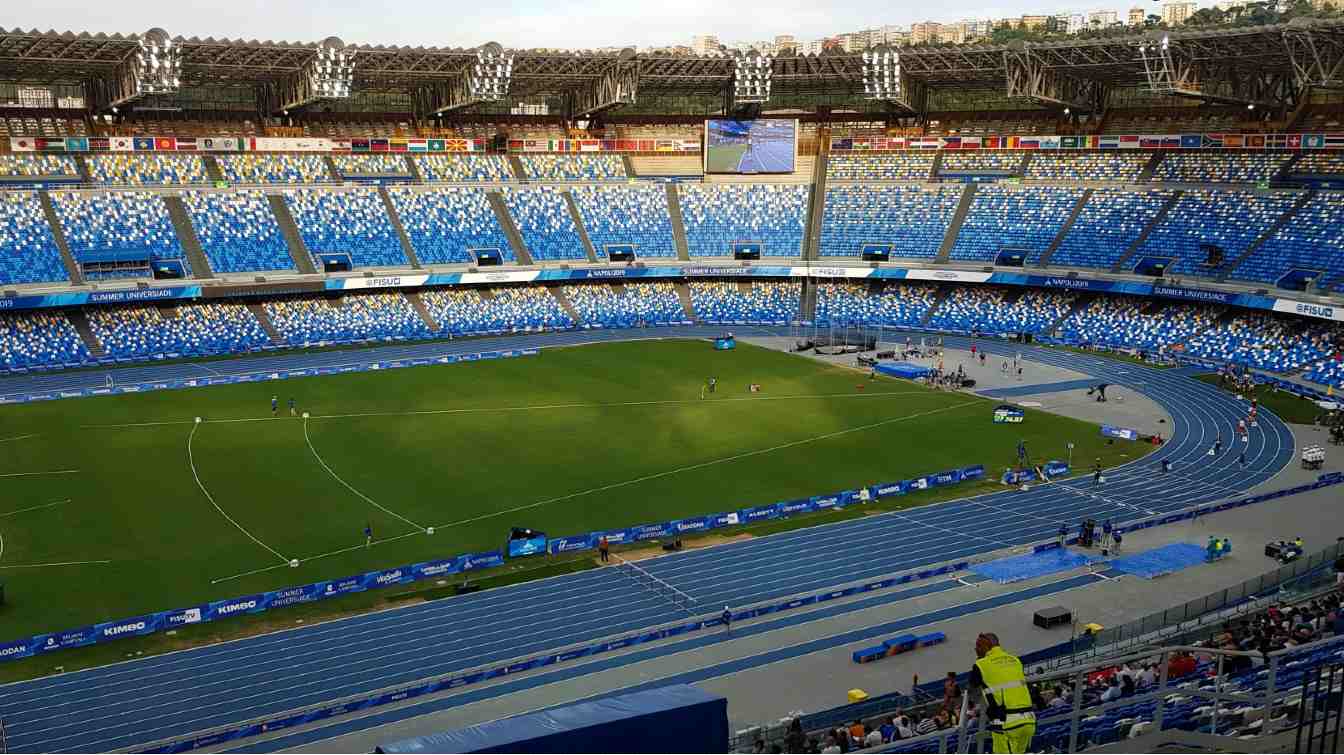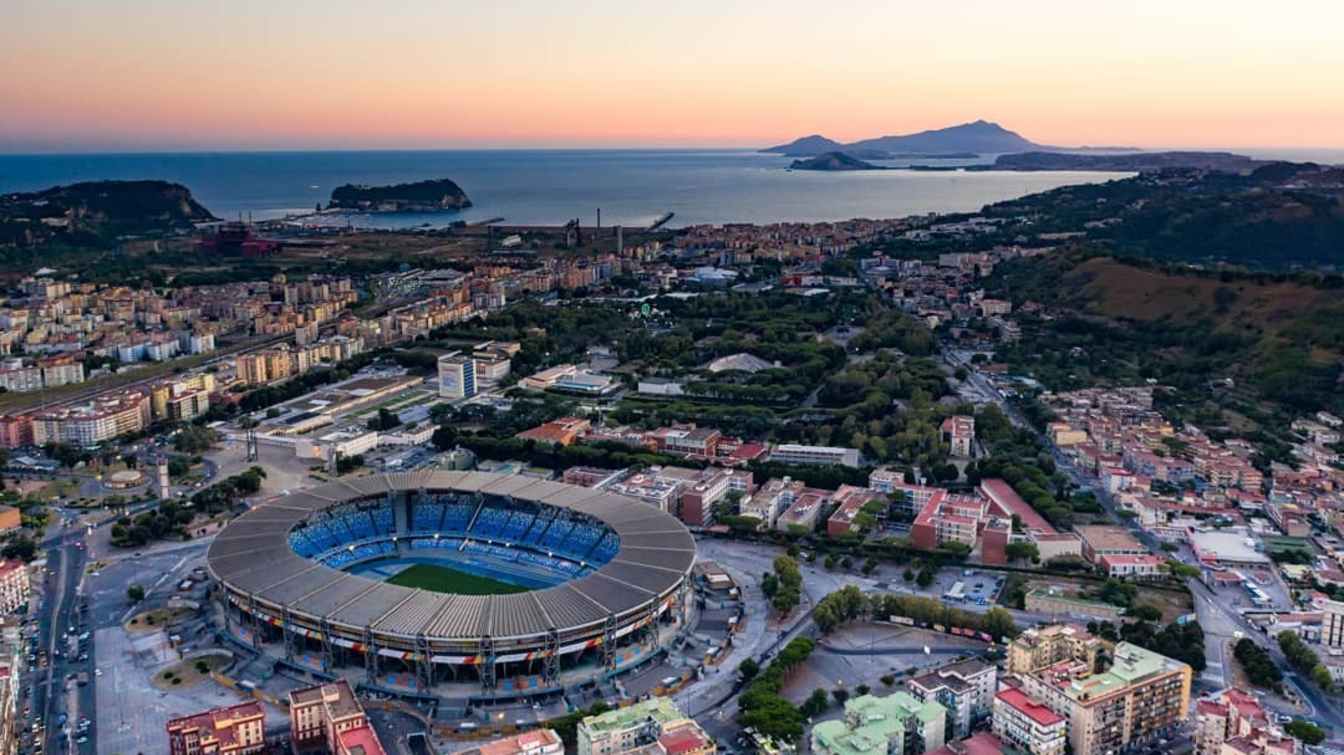Italy: The long-unused third tier of Stadio Maradona is planned to reopen!
source: StadiumDB.com; author: Paulina Skóra, Jakub Ducki
 Stadio Maradona is one of the most recognizable sports venues in the country. Although it can accommodate nearly 55,000 spectators, its third tier has been closed to the public for years. However, it seems that soon the stadium may regain its functionality from more than 20 years ago.
Stadio Maradona is one of the most recognizable sports venues in the country. Although it can accommodate nearly 55,000 spectators, its third tier has been closed to the public for years. However, it seems that soon the stadium may regain its functionality from more than 20 years ago.
Advertisement
Third tier and its worrying vibrations
The third tier of Stadio Diego Armando Maradona was built in the early 1990s as part of a modernization project, which also included installing a modern roof. While it was designed to increase the stadium’s capacity to an impressive 76,800 seats, its use has faced significant challenges from the start. The problem turned out to be vibrations in the metal structures supporting this additional level of seating.
Although the stadium offers a substantial number of seats distributed across two levels, the third tier was quickly cordoned off from the rest with barriers. After a few sporadic instances of actual use, this section of the stadium was partially isolated.
How is stadium’s structure designed?
To better understand the issue, we need to look at the construction of Stadio Maradona. The first two tiers were built from reinforced concrete – remnants of the original structure of Stadio San Paolo, which opened in 1959. The stands were arranged radially around the pitch, and the weight of the structure was transferred to massive foundations that stabilize the entire stadium.
The third tier is a separate, newer structure, detached from the lower levels. It consists of two key elements: steel support towers that hold up the enormous truss supporting the roof, and a grid of beams stretched between these towers, forming the additional seating tier.
It’s this grid, the backbone of the third tier, that turned out to be problematic. The metal beams respond to dynamic loads generated by the movement of spectators during matches. These loads cause vibrations that spread throughout the entire system, reaching the steel towers and – according to some analyses – even the buildings surrounding the stadium.
 © GaeC86
© GaeC86
Consequences of vibrations and decision to close level
The effects of this phenomenon are twofold. First, people in the third tier experience discomfort due to the forces and vibrations affecting their bodies. While this doesn’t pose an immediate threat of structural collapse, it signals serious operational issues.
Second, long-term vibrations can lead to resonance. Sustained oscillations may amplify over time and cause material fatigue, which could eventually compromise the integrity of the structure. This is why the simplest and safest solution was chosen – closing the third tier to the public.
How can the problem be solved?
Preliminary studies were recently initiated to identify an effective way to restore the third tier to public use. Experts analyzed three main engineering strategies. The first possible solution was to increase the stiffness of the structure by modifying the truss, either by connecting it to reinforced concrete elements of the stadium’s lower levels or by changing the support system of the main beams. This would allow the structure to better counteract external forces.
The second option involved altering the mass of the system. The use of so-called tuned masses, i.e., special weights that counteract vibrations, was considered. Such solutions are used in modern buildings, for example in the Taipei 101 skyscraper, where a massive 660-ton ball suspended on cables inside the building stabilizes the structure during strong winds or earthquakes. The third strategy was to increase vibration damping. This involves introducing devices that dissipate energy and limit the spread of vibrations. Similar solutions were implemented in London’s famous Millennium Bridge, which also faced vibration problems.
A few days ago, the Naples City Council approved work that includes modernizing the third, upper tier of stands. As a result, the capacity will increase to nearly 60,000 seats. At the next council meeting, a proposed amendment to the Integrated Planning Document (DUP) for 2025–2027 will be reviewed, which includes funding for the development of a technical design and the initial work to eliminate structural vibrations in the third tier.
Is this the end of changes at Stadio Maradona?
In parallel, work is underway on a broader plan to modernize the entire facility, which depends on the upcoming government decree on stadium financing. The city is analyzing available financial instruments to prepare a realistic and feasible redevelopment plan. The topic was also discussed in talks between Manfredi and Sports Minister Andrea Abodi.
Advertisement
 StadiumDB
StadiumDB